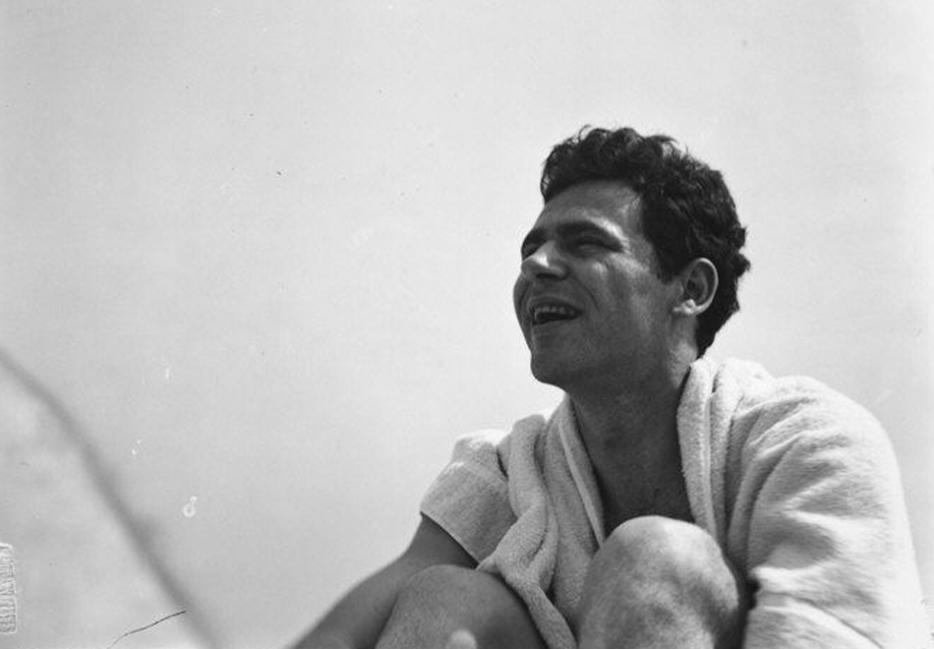In November 1951, a few weeks before his 42nd birthday and less than four years before his death by heart attack, James Agee was living in Los Angeles and reading Heavenly Discourse, a book of early 20th-century Christian dialogues by Charles Erskine Scott Wood. He found the book “clumsy and over-simple and repetitive too,” but was still moved. “Better than the dialogues themselves,” Agee wrote to his best friend, “I like the man I infer from them—a warm, generous-hearted, compassionate, angry man who really did love freedom.”
Agee’s own prose was rarely clumsy or simple, but certainly a chief charm of reading it is the personality that looms behind the work. That’s not faint praise. He wrote widely—on sharecroppers, silent films, orchids, World War II, religion, ethics, metaphysics, and on and on—and his books, none of which found an audience during his lifetime, comprise some of the most resolutely minor genres: film reviews, screenplays, unbylined magazine features, childhood memoir. The connective tissue through it all, and the thing that raises this gnarly and seemingly unglamorous body of work to the realm of great art, is Agee himself, a searching and self-punishing man with a verbal style that bounced between plainspoken Southern calm and King James intensity. He will always be underrated because his work is more interesting the more you read of it, which is why Agee devotees have published a steady clip of journals, scrapbooks, and errata, much of it unintended for publication, ever since he died.
Letters of James Agee to Father Flye, from which the Heavenly Discourse judgment is taken, was the first of these clearinghouses, and has now been returned to print by Melville House, who also published the long-lost Cotton Tenants: Three Families last year. When Letters appeared in 1962, Agee’s 1941 opus Let Us Now Praise Famous Men had been recently reissued to a much grander reception than it initially enjoyed, and his 1940s movie criticism for The Nation and Time had been collected as the indispensable Agee on Film. These books owed their existence to the success of Agee’s posthumous novel A Death in the Family, which won the 1958 Pulitzer Prize and inspired a beloved play and movie. All three of these masterpieces capture him at a specific phase in his life—the tortured twenty-something poet-journalist, the humbled thirty-something hack, and the haunted middle-aged artiste—but Letters was the first book to present Agee across the long years. It starts in 1925, just as 16-year-old Rufus (his middle name and childhood handle) leaves his native Tennessee for Phillips Exeter Academy in New Hampshire, and ends in 1955, days before the last of Agee’s innumerable coronary episodes, this time in a New York cab. These letters were the longest-lasting written project of Agee’s life.
So just who inspired such diligence from an otherwise flighty talent? James Harold Flye could have hardly been more different in character from his pen pal: a Maine native, he taught history at St. Andrew’s, an Episcopal school for boys in Sewanee, Tennessee, from 1918 to 1954, and otherwise lived a quiet life of religious devotion and literary scholarship, mentoring generations of young people in Harlem and Wichita. He was married to the same woman for decades until her death, and lived to be 100. Agee enrolled at St. Andrews in 1920 at the age of nine, when the priest was 35. They bonded over a shared love of books, but also fulfilled a deeper longing in each other: Agee had lost his father when he was six years old (the basis for A Death in the Family), and Flye, despite his paternal nature, never had children.
“I was immediately impressed by this boy,” Flye later told Agee’s biographer, Laurence Bergreen. Nevertheless, “there were no signs that I observed then or for some time afterward of his being of the quality of a well-known and professional writer.”
Yet by high school, when the first of the published letters was sent, Agee had already settled on writing as his main means of self-expression and professional success. “I have written stuff for the Monthly, and I am to get a story and 2 or 3 poems in this month,” he brags, and from that point the whole book is animated by Agee’s desire to be taken seriously as a writer by his well-read father figure. His ambitions are staggering from the first to the last: “I’d like, in a sense, to combine what Chekhov did with what Shakespeare did,” he says on the cusp of 21, whereas at 42 he thinks up an idea for “a movie whose ‘hero,’ or central character, is a major storm; how it is born and grows; what it does to people, animals, crops, and the face of the earth.”
But he is also, in the manner of Let Us Now Praise Famous Men, almost perversely attentive to his own shortcomings as a writer and a man. “I haven’t yet learned at all well how to use either time or myself,” he confesses while in the thick of writing that book, a few months before claiming, “I have a really dangerous and to me terrifying lack not only of discipline of thought and conduct but of any hold to take towards learning discipline.” The letters spill over with projects never seen through, dietary and health concerns, and Agee’s constant apologies for not corresponding sooner.
But in their unstinting focus on writing and work, the Letters do show Agee on something like his best behavior. His ugliest personal failings—particularly a nasty episode where he convinced his second wife, Alma Mailman, to sleep with his friend Walker Evans while he watched, then fell into a deep jealous depression—are largely sidelined here, as are personal details of any kind. At the very end of a long 1938 letter about communism, education, and personal finances, he signs off with, “Alma and I were married early this month,” then scarcely mentions her again. Flye and Agee sometimes went a decade or more without seeing each other in person; other than a few years of close contact in childhood, Agee’s relationship to this man was forged in words and in thought, not by close knowledge of each other’s daily lives.
Of course, you don’t read James Agee for narrative tightness or orderly presentation (“If there’s anything that disgusts me,” he wrote to Father Flye at 16, “it’s what’s called a ‘smooth line’”); you read him for a momentary glimpse at his ever-rushing mind. By that standard, Letters of James Agee to Father Flye is his greatest book, the one where he’s most untethered to any one subject besides his own intellectual whims, yet most generous and appreciative of his audience. But you don’t read Agee for “greatness,” either, at least not in the Shakespearean sense. “The thing I’m trying hardest to do is, to decide what I want to write,” he tells the reverend as a 20-year-old Harvard undergraduate, “and in exactly what way.” That very indecision was his muse and his fundamental subject, and it animates the pages of this fascinating little book—a portrait, like everything he wrote, of a warm, generous-hearted, compassionate, angry man who only felt at home when struggling for freedom.






